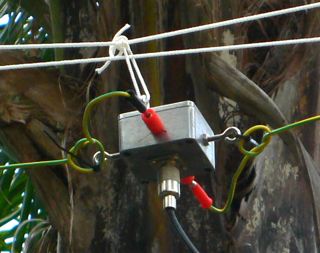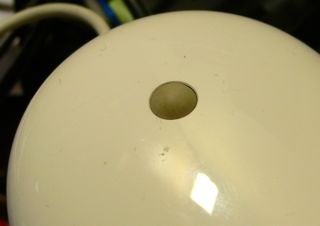
As a family, we decided to travel to Canberra to watch the torch relay and join the crowd in support of the Tibetan community. I headed out early for a
commitment with the ABC and was surprised to see young Chinese people starting to mass along Northbourne avenue quite a long way from the city centre.
It was about 7:40am and 5 degrees C, so it was pretty chilly to be standing out there. I had a chat with the young Chinese people who seemed nice and had taken on "ozzie" nationalistic behaviours such as being wrapped in flags and with flag temporary tattoos on their cheeks. At that time all seemed pretty well, except for the stream of busses arriving with more while I watched.
Later we walked to the lawn in front of parliament house. Here we had to get past a large crowd of Chinese nationalists who were chanting "One China", so we could join the Tibet crowd. It was a nice group although some people had rather gruesome images of dead Tibetans out for display. There were speeches from Bob Brown and K.D. Lang as well as others.

Bob's a real trooper, he gave a great speech and freely mingled with the crowd. He's pictured here talking with a reporter from
Deutsche Welle.
The pro-Tibetans and pro-Chinese groups stayed pretty separate until after the torch went by and we started to move over the river to try to catch up with it again.
As we walked the groups started to interact and it was not pretty. The Tibetans were basically saying that they are not anti-china, but just want basic human rights for Tibet and would like China to at least talk with the
Dali Lama. The Chinese crowd were quite intimidating, both in their numbers, their organised uniformity and what they were shouting at us. There were people driving by in cars aggressively giving us "the finger" through the window, their faces hidden behind red flags.
The Chinese would shout "One China" and if someone asked about human rights, they'd shout back "you know NOTHING", which really didn't help as it wasn't clear what they know that we are yet to be informed about.
We all walked down from parliament house, past a rather ominous blood bank bus with "don't ignore the need for blood" painted on it, and over the bridge to a park on the other side. Here we were getting stuck and the intermingled crowd was getting agitated. The huge police numbers in Canberra were clearly focussed on the torch and were not much use where we were or even in directing traffic. The mood was turning and I suggested we exit. My wife felt it best to stay as her presence as a witness might prevent violence.
As I left the scene the riot police turned up and ran in to settle things down.

All in all, it was a good day for democracy in Australia, as Bob Brown pointed out, if we'd done this in China we'd all have been arrested and I'd add that there would be no trace of it in the news or on the internet.
We watched the evening TV news versions and the local ABC TV had by far the most accurate version of events.
I like and respect the Chinese people but I'm puzzled about what the government is so fearful of that they must violently put down any opposition and censor the news and internet. Are they so brittle that words will harm them?
 I love Bill M0HBR's regular podcast SolderSmoke, the ongoing story of a home brewing ham radio enthusiast who is currently on the air from a flat in Italy using an end fed long wire antenna.
I love Bill M0HBR's regular podcast SolderSmoke, the ongoing story of a home brewing ham radio enthusiast who is currently on the air from a flat in Italy using an end fed long wire antenna.  I'm experimenting with antennas again and wanted a way to string up a dipole so that I could easily pull it down and make adjustments.
I'm experimenting with antennas again and wanted a way to string up a dipole so that I could easily pull it down and make adjustments. 
 As a family, we decided to travel to Canberra to watch the torch relay and join the crowd in support of the Tibetan community. I headed out early for a
As a family, we decided to travel to Canberra to watch the torch relay and join the crowd in support of the Tibetan community. I headed out early for a  Bob's a real trooper, he gave a great speech and freely mingled with the crowd. He's pictured here talking with a reporter from
Bob's a real trooper, he gave a great speech and freely mingled with the crowd. He's pictured here talking with a reporter from 
 All in all, it was a good day for democracy in Australia, as Bob Brown pointed out, if we'd done this in China we'd all have been arrested and I'd add that there would be no trace of it in the news or on the internet.
All in all, it was a good day for democracy in Australia, as Bob Brown pointed out, if we'd done this in China we'd all have been arrested and I'd add that there would be no trace of it in the news or on the internet. Just stumbled upon an amazing remote controlled receiver available on the internet called
Just stumbled upon an amazing remote controlled receiver available on the internet called 
 MySQL has been a hugely popular database and is unambiguously the M in LAMP. (Whereas the P could be Perl, Python or PHP). That must annoy the Postgres folks.
MySQL has been a hugely popular database and is unambiguously the M in LAMP. (Whereas the P could be Perl, Python or PHP). That must annoy the Postgres folks. In preparation for the next NSW Home Brew group meeting at Dural where we will be having a power meter calibrate-athon, I've built a crazy box for my simple QRP power meter. Haven't tried to calibrate it but the output of a
In preparation for the next NSW Home Brew group meeting at Dural where we will be having a power meter calibrate-athon, I've built a crazy box for my simple QRP power meter. Haven't tried to calibrate it but the output of a  I'm working with SOAP and WSDL at the moment and golly that xml can be hard to read.
I'm working with SOAP and WSDL at the moment and golly that xml can be hard to read. Acting on a tip from a work colleague, I dropped in to "
Acting on a tip from a work colleague, I dropped in to " I came away with an "OptiVisor" head magnifier that I need for my recent forays into surface mount soldering, really I wanted the steampunk style that the guy I spoke with was wearing (left) but he told me that regrettably, they are no longer available.
I came away with an "OptiVisor" head magnifier that I need for my recent forays into surface mount soldering, really I wanted the steampunk style that the guy I spoke with was wearing (left) but he told me that regrettably, they are no longer available. Microsoft makes really great mice. Apple just can't seem to get it right.
Microsoft makes really great mice. Apple just can't seem to get it right.